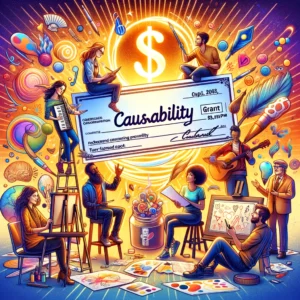For decades, snail mailers – the tangible, paper-based communications sent through postal services – have been a vital tool in the arsenal of nonprofits, serving as a primary method of outreach, fundraising, and stakeholder communication.
In today’s eco-aware era, every sector is under scrutiny regarding its carbon footprint and overall environmental impact. Nonprofits, known for championing causes and making positive changes, are no exception. One aspect of nonprofit operations that often comes under the lens is the use of snail mailers. In the digital age, are they still relevant? Are they sustainable? And importantly, how do they fare against the backdrop of environmental concerns and stakeholder perceptions? This article seeks to answer these pressing questions.
1. The Sustainability and Environmental Cost of Snail Mailers
Deforestation and Biodiversity Loss
At the heart of every paper-based snail mailer is wood pulp. Forests, the lungs of our planet, are frequently cleared to meet the ever-increasing demand for paper. This leads to biodiversity loss, disruption of natural habitats, and a decrease in trees that absorb carbon dioxide.
Water Consumption and Pollution
Producing a single sheet of paper can consume up to 10 liters of water. The process also introduces pollutants into waterways, affecting aquatic ecosystems and often leading to larger environmental imbalances.
Carbon Emissions
Beyond just paper production (which has its own significant carbon emissions), the transportation and delivery of mailers have an associated carbon footprint. Each step, from paper manufacturing to the mailbox, emits CO2, further accelerating global warming.
2. Is Snail Mail Still Effective?
There’s no denying that there can be a charm associated with physical mail – the tactile feel, the personal touch. However, in an era of instant communication, the pace and relevance of snail mail are being questioned.
- Generational Responses. While older generations might have a nostalgic affinity for physical mail, millennials and Gen Z might view it as outdated. With younger (and older) generations being more environmentally conscious, the reception might even be negative as they realize the environmental cost and waste associated with physical mail.
- Engagement Metrics. The open rate for physical mailers might be higher than digital mail. Still, the conversion – actions like donations, event participation, or other engagements – is waning, especially with the younger demographic. The digital world is immediate; if someone receives digital outreach and they’re receptive to it, they can perform actions like donations — or even buying your nonprofit merch — with the touch of a button: something not possible with snail mail.
3. Psychological Impact of Tangible vs. Digital Outreach
No doubt, as both physical and digital outreach are different in nature, they will have vastly different psychological impacts on your audience. Let’s discuss:
The Tangible Touch and Perception of Waste
Physical mail provides a sensory experience – the feel of paper, the act of opening an envelope. This tangibility can create a more profound connection, making the recipient feel valued and special. However, a significant downside to snail mailers is the perception of wastefulness. In a world moving towards minimalism and zero waste, unsolicited mail can lead to negative reception. Many view it as wasteful clutter, and for nonprofits, this can counteract the very cause they’re championing.
Digital Speed and Efficiency
On the flip side, digital communication provides immediacy. Information can be shared in real-time, leading to quicker actions and reactions. If someone is receptive to a digital mailer or some other form of virtual outreach, they can respond — and donate — immediately.
4. Economic Implication of Snail Mail
In the age of digital efficiency, understanding the financial implications of traditional practices like snail mail is crucial, especially for nonprofits that rely heavily on donations and budgetary constraints.
Direct Costs: From Production to Delivery
Design and Content Creation: Before printing comes the process of designing the mailer. Whether it’s done in-house or outsourced, designing can rack up costs, especially if specialized content or artwork is required.
Printing Costs: These can vary widely based on the quality of paper, volume of mailers, and color vs. monochrome printing. Special inks, embossing, or other unique features further increase these costs.
Postage and Handling: With the fluctuation of postal rates and the added costs for bulk mailing or special delivery features, postage can become one of the most significant expenses in the snail mail process.
Indirect Costs: The Less Obvious Implications
Time Delays: The time between dispatching a mailer and its receipt by the intended recipient can span several days. This lag can delay responses or actions, especially critical in time-sensitive campaigns or appeals.
Manpower: Sorting, addressing, stamping, and dispatching physical mailers require human resources. Whether it’s volunteer hours or paid staff time, this labor has an economic value.
Waste and Redundancy: Undelivered mail, returned mail, or mailers sent to outdated addresses lead to both financial and resource wastage.
Opportunity Costs: What's Being Missed Out?
By investing heavily in snail mail campaigns, nonprofits might miss out on opportunities presented by digital alternatives. Digital platforms often offer more immediate engagement at a fraction of the cost. The potential donations or engagements lost due to the slower pace of snail mail can be substantial.
5. Eco-Conscious Alternatives and Their Benefits
While snail mailers are a tempting way to reach for new supporters for your nonprofit cause, there are more environmentally-friendly alternatives to snail mailers.
Digital Newsletters and Email Campaigns
- Customization and Personalization: Advanced CRM systems allow organizations to tailor content to individual recipients, enhancing engagement.
- Analytics: Real-time tracking means nonprofits can quickly adjust strategies based on recipient behavior.
- Lightening-Fast Recipient Actions: Your audience can donate to your nonprofit with the touch of a button through your fundraising platform or directly to your website.
Social Media Advocacy
- Engagement Tools: Polls, live videos, and Q&A sessions allow for interactive and immediate engagement.
- Broadened Reach: A well-timed post can reach audiences far beyond an organization’s direct followers.
Webinars and Virtual Events
- Interactivity: Live Q&As, breakout rooms, and interactive presentations can rival the engagement of physical events.
- Accessibility: Virtual events are not bounded by geography, making them accessible to a global audience.
Eco-friendly Print Alternatives
- Recycled Paper: This reduces the demand for new wood pulp.
- Sustainable Printing: Techniques like offset printing can be more environmentally friendly.
Charting a Sustainable Path Forward
In weighing the pros and cons of snail mailers for nonprofits, it’s clear that while they have had their golden era, the future is steering towards eco-friendlier alternatives. As nonprofits champion change and a better future, aligning their communication methods with sustainable practices is not just advisable; it’s imperative. By adapting to the digital age and being mindful of their environmental footprint, nonprofits can continue to inspire, engage, and make a difference.
If you want to read about other ways how Causability is helping nonprofits, why not read up a little about us?



